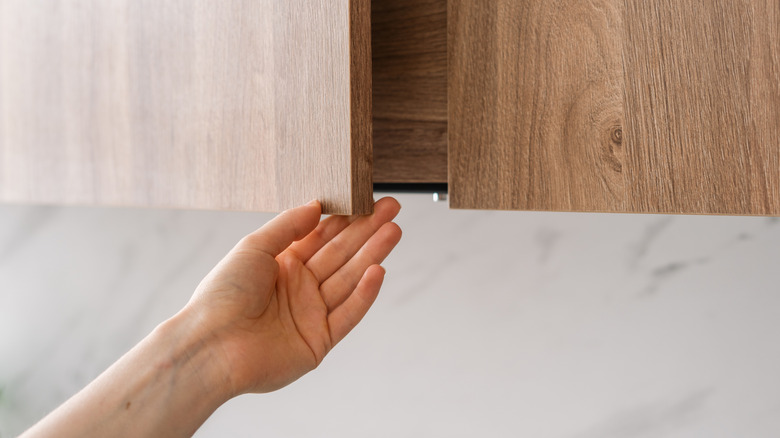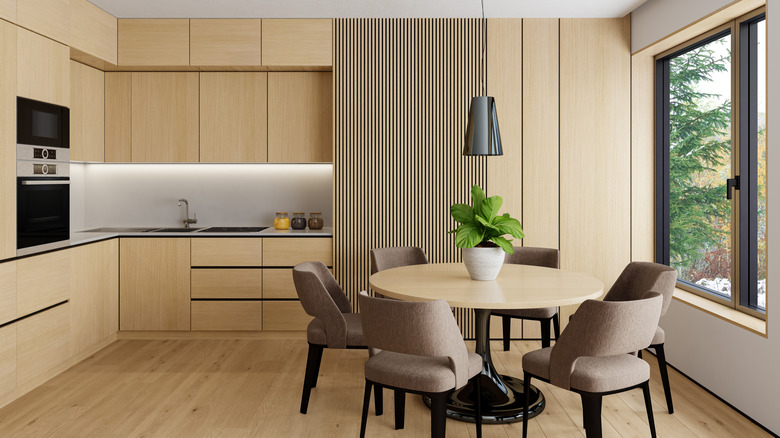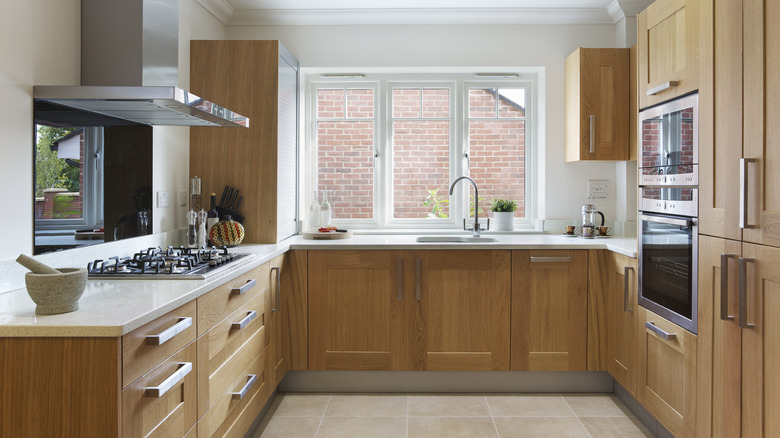Softwood Vs. Hardwood Cabinets: What Is Best For Your Kitchen?
Solid wood kitchen cabinets are synonymous with longevity, craftsmanship, and a level of tailoring that has become rare within today's off-the-shelf, mass-produced standard. Because they demand a bigger initial investment that reflects the relative scarcity of the material and the expertise of the labor, they're also synonymous with luxury. But solid wood kitchens don't have to be reserved for those with deeper wallets, especially since they might be the most financially conscious decision in the long run, often lasting homeowners a lifetime instead of leading to recurrent renovations. In order to decide on the best wood option for your kitchen cabinets, it's vital to understand the difference between hardwood and softwood. The former is denser and rarer, stemming from slow-growing deciduous trees; the latter is lighter and more abundant, originating from fast-growing evergreen species. But each provides effective solutions for cabinets in their own way.
Most manufacturers nowadays offer engineered wood cabinet boxes that can then be given a more sophisticated, less synthetic appearance with the addition of solid wood face frames, doors, and drawer fronts. This is generally considered a great middle ground between the high-end look associated with solid wood and more practical factors like price, availability, and ease of installation. Picking between hardwood and softwood in those cases is more down to stylistic preference than anything else. However, if you're married to the idea of all-solid wood cabinets, then the distinction warrants a closer look.
Pros and cons of softwood cabinets
Softwood is timber obtained from conifer trees. Like the name suggests, these are typically evergreen trees that bear cones like pine, cedar, fir, and redwood. Generally, it's accurate to describe this type of wood as being softer than hardwood, but there are a few exceptions. The sturdy yew pine, for instance, is denser than hardwood species like black cherry, English walnut, and poplar.
Because of its simpler cellular structure, softwood is lighter and more flexible, allowing for easier transport and crafting. This, paired with the fast-growing evergreen nature of these trees, which makes them inherently more abundant and accessible, gives softwood a much lower price tag than its stronger sibling. It's especially well suited for woodwork and construction, but it can also be the perfect material for quality, relatively inexpensive furniture. Conversely, it's more susceptible to damage like dents and scratches, as well as wood rot, which is not ideal for high-traffic, leak prone areas like the kitchen. Cedar is an important exception, though. This softwood is naturally resistant to decay and insects, making it a great option for both outdoor and indoor use.
This kind of timber is a great option for a solid wood kitchen cabinet if you're on a budget but still want to achieve an organic modern aesthetic in your home. Keep in mind, however, that visually, the grain in softwood tends to be more subdued than in hardwood, since coniferous species don't have pores and grow faster, creating wider, less intricate patterns. This wood provides a cleaner, more minimalist look and is usually lighter in color. Think Scandinavian style interior design, which lives for a pinewood moment.
Pros and cons of hardwood cabinets
Deciduous trees that produce hardwood, such as oak, cherry, alder, birch, and hickory, take longer to grow and are larger, which is why this wood type is so much stronger, but also harder to come by. Some trees may need over a century before they're ready to harvest, compared to the four-decade average of softwood growth. That time frame alone makes hardwood much more expensive, which is only exacerbated by the skill level needed to craft it into beautiful cabinetry for your kitchen. Working with hardwood takes time, patience, and talent, but the results offer unparalleled beauty, strength, and durability, which is why it is one of the most popular cabinet materials.
Hardwood can withstand wear, weight, and, with the right care, pests and moisture-induced damage. It's a super material that looks gorgeous with its rich grain patterns from a multiple-decade existence in the wild. Anyone would be lucky to have it in their kitchen and would most likely choose to if they could.
The drawback, of course, is its price. You won't find all-hardwood cabinets ready-made at a chain store. So, beyond the cost of the material, you'll have to invest in the quality craftsmanship that will tailor it to your space. This could set you back as much as $50,000, depending on wood type, design specificities, and room dimensions. As mentioned, you could recoup the costs by avoiding replacing a lesser quality kitchen every 20 or so years. Depending on your priorities, hardwood kitchens can be worth the money in a forever home or if you want to increase property value.


